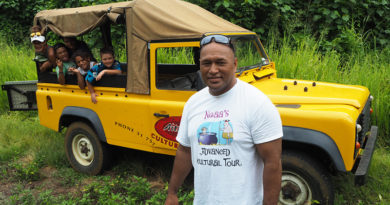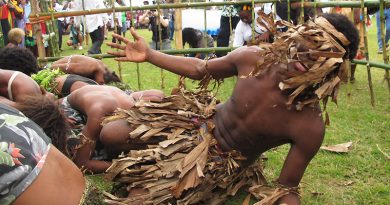Exploring Fiji on foot
I’m sure my insistence on seeking out walks in Fiji’s Yasawa Islands marked me out as something of an eccentric.
No sooner would I manage to slip a walk into my busy seven-day itinerary than it would disappear again, replaced by something far more sensible like cooking classes, a fishing expedition or snorkeling with sharks.
I did, however, manage to squeeze in a few hikes. I’m not going to claim they were the best walks of my life, but they were interesting diversions from the more usual holiday business of eating and swimming. And the vistas they offered were among the most eye-poppingly beautiful I’ve seen.

The Yasawas are a chain of 20 or so sparsely populated islands northwest of Viti Levu, Fiji’s main island. The most distant is about five hours by ferry from Nadi’s Port Denarau; the closest is just over two hours.
Their topography instantly marks them out as good walking territory. Unlike the flat and mostly tiny Mananuca Islands closer to Nadi, the Yasawas are ancient volcanoes, their rolling, grassy ridges broken by towers of ancient lava.
There’s not a lot in the way of virgin bush, thanks to centuries of slash-and-burn agriculture, but the open tops guarantee clear views. Most resorts will have at least a sunset trail to the nearest hilltop, and some offer guides for more demanding walks.
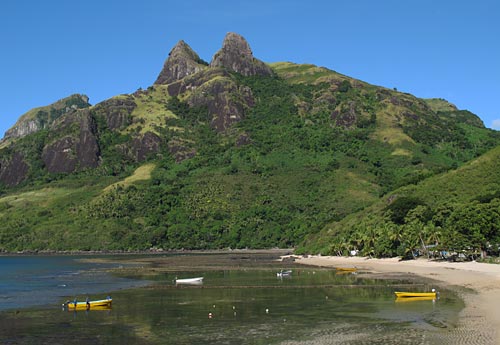
One thing to bear in mind in Fiji is that every bit of land is owned by someone. It’s poor manners to march all over someone’s ancestral land without permission, so always ask at the resort first. Sometimes a guide is needed because the maze of pathways can be hard to follow; other times the guide is your passport to cross another village’s land.
The first walk I tackled was to the top of one of those implausibly steep lava towers. Called Ulu-i-Naikaukau, it is one of a series of near-vertical peaks that follow the spine of Waya Island like a tuatara’s spikes.
Once the day had cooled — hiking at noon in the tropics is not recommended — the staff at Octopus Resort rustled up a guide from a nearby village, a 26-year-old pig farmer named Sio.
Sio wasn’t a big talker at first but he was good at pointing out the pig pens. As the track zig-zagged uphill we also passed villagers planting cassava, a staple root crop, in freshly burnt clearings.
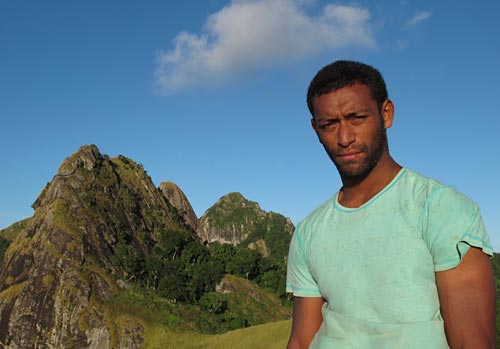
As the bush gave way to grassy ridges and the views over Waya’s bays and headlands opened up, it turned out that Sio had another motive for being my guide. He had a girlfriend on the next island and had a romantic photo opportunity in mind, involving himself, his hands in a heart shape, and her island in the distance.
I hadn’t expected a village pig farmer to go hiking with a smartphone. Nor had I expected him to post romantic photos on his girl’s Facebook page. Proof, if it was needed, of the almost universal reach of social media.
That broke the ice between us and sparked a comical series of selfies, most of which I have since deleted. A word of advice: If, like me, you are a sunburnt, sweating, European man of middle age, do not pose for a selfie with a handsome Fijian in his 20s who looks like he’s been working out since he left kindergarten. It will not do your self-image any favours.
Soon we reached the base of the peak itself. What had been a straightforward walk suddenly became a something entirely different.
The way up was via a narrow cleft in the rock; the technique was to brace one’s hands on each side of the gap and climb up a series of tiny footholds someone had helpfully improved with concrete. I inched up fearfully. Sio scampered up casually in a pair of jandals.

It couldn’t have been more than a few hundred metres above sea level but the view was extraordinary. Directly below was Sio’s village, an orderly grid of iron and thatch roofs half hidden in coconut palms; behind us, a row of even more vertiginous peaks; and all around us the green fingers of Waya Island reaching into the sea, stretching and sparkling to the horizon.
If the way up was nerve-wracking, the way down was terrifying. A fierce wind tearing at our limbs didn’t help. If it wasn’t for Sio’s calm guidance I’d still be up there now. Did I mention my fear of heights?
We made it down just as the sun was setting and villagers were hauling their boats in for the night. And just in time for the resort’s nightly kava ceremony.
I was trusted to tackle the other walks on my own. It may have helped that they were on small islands where land ownership was simpler.
In the case of Drawaqa Island, about 45 minutes further north by ferry, the well-maintained Barefoot Island Trail climbed a series of hills offering sublime views of reefs, channels and surrounding islands.
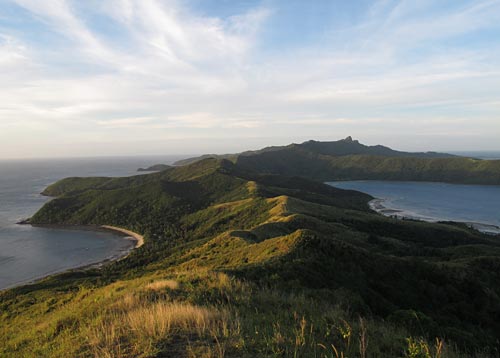
Still further north, a rough trail from Tavewa Island’s Coralview Resort to a cellphone tower — the 21st century intruding again — offered fine sunset views of the island’s bigger and more barren neighbour, Nacula.
But the best view of all was from a hilltop on Naviti Island, reached in an easy ninety-minute stroll along an undulating, open ridge from Botaira Resort.
To the north the island’s crinkled spine stretched into the distance, dotted with trees that seem to have been transplanted from a Dr Seuss book; to the south a series of small, intensely green islands looked like stepping stones to rugged Waya Island, its bare flanks and jagged peaks softened by the evening light.
I’m not eccentric enough to urge anyone to forget the other pleasures of the Yasawas for the sake of a bit of hiking, because the islands’ greatest attractions are their underwater life and the warmth of their people.
But every now and then, try exploring the hills behind those white sandy beaches. There, too, is beauty.
Practicalities
Most islands in the Yasawas offer some kind of hiking. On the smaller islands it might be a half-hour stroll to a modest hilltop; on the bigger islands you can walk for hours on rough trails to vertigo-inducing peaks.
On the bigger islands check whether you need a guide or permission from the land owners. A guide, costing around F$30 (NZ$21), can also be useful to find some of the longer trails which are falling into disuse as motorboats replace walking as villagers’ main means of transport.
Bring plenty of water and closed shoes or boots for the rougher trails. In the tropics cuts and grazes are quickly infected.
The walks mentioned here are just a small sample. Another guided hike that gets good reviews is to the “wobbling rock” atop Wayasewa Island, also known as Waya Lailai.
The Yasawa Flyer catamaran calls in at most islands every day, leaving Nadi’s Port Denarau at 8.30am and returning around 6pm.
In 2014 accommodation started from about F$35 (NZ$25) a night in the dorm at Octopus Resort with a compulsory three-meal package of F$99 (NZ$69) a day. A traditional bure for two at Botaira Resort with all meals costs F$528 (NZ$370) a night, dropping for longer stays. See www.fiji.travel for more information.
The author was a guest of Tourism Fiji, Awesome Adventures Fiji and the resorts named in this story.


